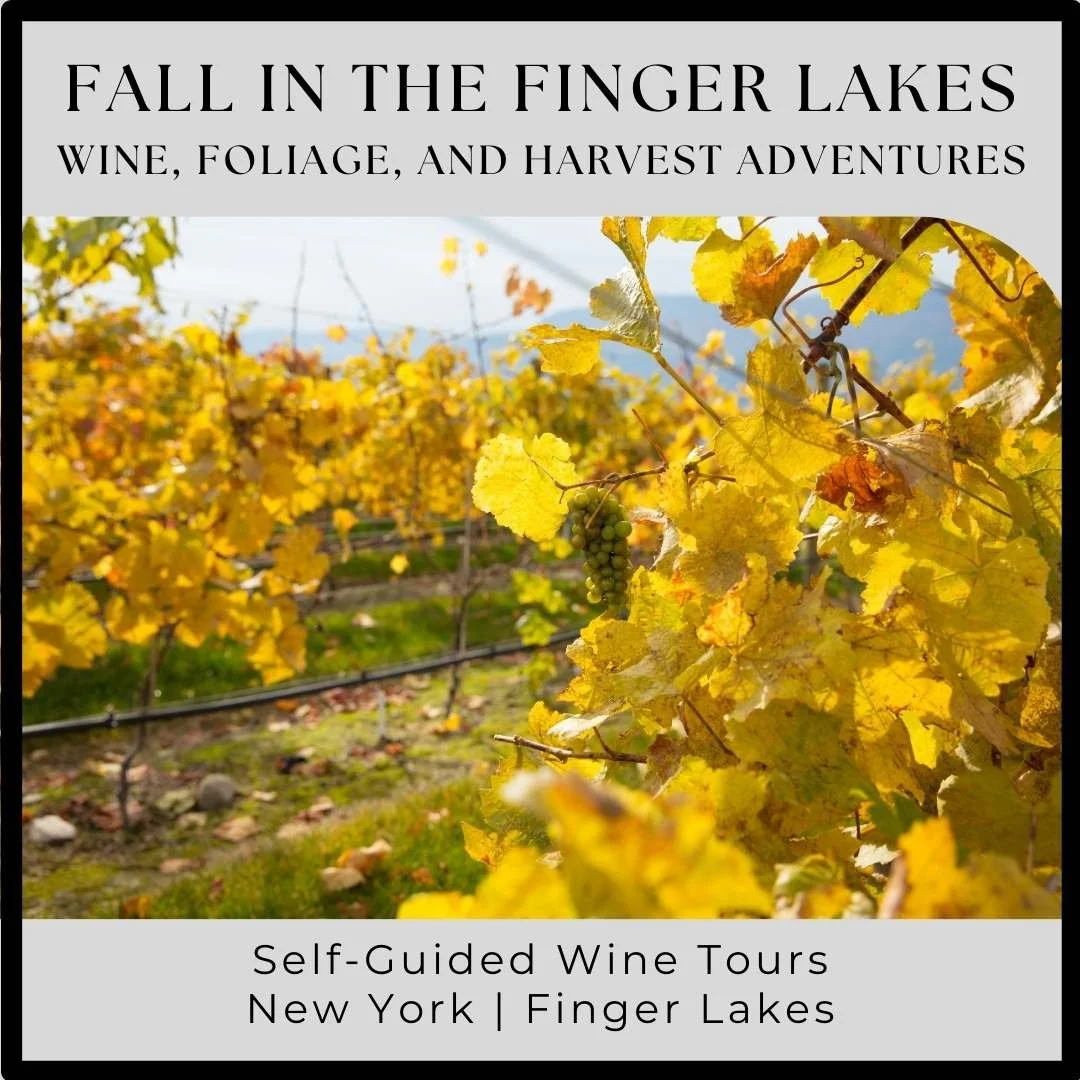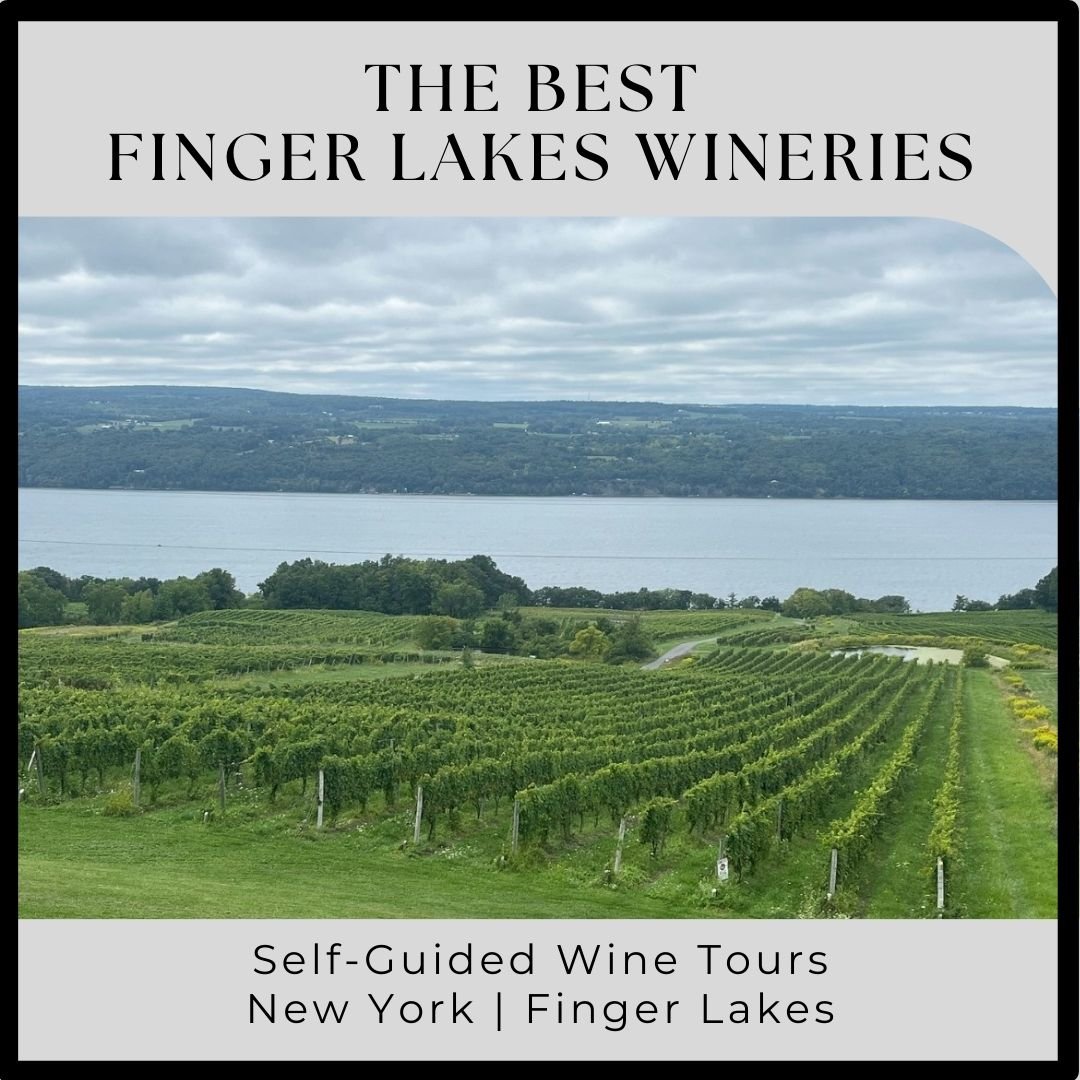History of the Finger Lakes Wine Country
From the Ice Ages to World-Class Wines
Located in upstate New York between Rochester and Syracuse, the Finger Lakes, is a captivating region distinguished by its 11 long, narrow lakes. Shaped during the last ice age as glaciers receded, these lakes—Canadice, Cayuga, Canandaigua, Conesus, Hemlock, Honeoye, Keuka, Otisco, Owasco, Seneca, and Skaneateles—earned their collective name due to their resemblance to fingers laid across Central New York.
Renowned for its picturesque landscapes, serene lakes, and flourishing wine culture, the Finger Lakes region boasts rolling hills, deep gorges, stunning waterfalls, and the iconic lakes stretching from north to south. The glacially-carved terrains give rise to a unique terroir that significantly influences local agriculture, especially the flourishing vineyards.
The expansive and deep freshwater lakes, along with the soil deposits of limestone, shale, gravel, and silt around them, left by glaciers are ideal conditions for planting vines. With a temperate climate, characterized by cold winters and moderated summers, the region's vineyards thrive. The combination of rolling hills and the deep lakes that rarely freeze completely makes it an ideal environment for cool-climate grape cultivation.
Whether exploring the scenic beauty of the lakes, delving into the rich winemaking heritage, or indulging in outdoor activities, the Finger Lakes region offers a tranquil escape for nature lovers and wine enthusiasts alike.
To learn more about Finger Lakes Terrior read Journey into Finger Lakes Terroir: The Impact oF Three Lakes
Finger Lakes AVA Map
Tracing the Beginnings of Winemaking in the Finger Lakes
Early Beginnings (19th Century)
1829: Reverend William Bostwick plants the first vineyard in his rectory garden in Hammondsport, NY
1860: Pleasant Valley Wine Company, the first commercial winery, opens in Hammondsport, marking the region's recognition as a wine-producing area.
Several wineries established, including O-Neh-Da Vineyard, Taylor Wine Company, Urbana Wine Company, and Widmer’s Wine Cellars.
Prohibition and Setbacks (Early to Mid-20th Century)
1920-1933: Prohibition era deals a significant blow to Finger Lakes wine industry, leading to uprooted vineyards and winery closures.
Revival and Growth (Late 20th Century)
Charles Fournier and Dr. Konstantin Frank Tasting in the Cellar - Photo Courtesy by Dr. Konstantin Frank Winery
Post-Prohibition era sees gradual winemaking revival
1962: Dr. Konstantin Frank revolutionizes Finger Lakes winemaking, introducing European grape varieties. Vinifera Wine Cellars opens, later known as Dr. Konstantin Frank Wine Cellars.
1970s: Europeans drive wine-making innovation – Charles Fournier cultivates 20 acres of Vinifera on the east side of Seneca Lake; Hermann Wiemer plants 140 acres on the west side of Seneca Lake.
1981: Cayuga Lake Wine Trail forms to promote tourism, becoming the first and longest-running wine trail in America.
1982: Finger Lakes AVA (American Viticultural Area) is established.
1988: Cayuga Lake AVA is established.
2003: Seneca Lake AVA is established.
Surge in winery establishments and vineyard plantings.
Winemakers experiment with cool-climate grape varieties like Riesling and Chardonnay.
Recognition and Modern Era (Late 20th Century to Present)
Recognition for world-class Rieslings with crisp acidity and vibrant flavors.
Wineries receive awards on national and international stages.
Ongoing innovation in grape varieties and winemaking techniques, expanding beyond Riesling and white grape varieties.
High-quality red wines like Cabernet Franc, Lemberger, Melot, and Pinot Noir express the unique terroir.
Emphasis on sustainability – minimizing synthetic inputs and incorporating renewable energy.
Wine Tourism and Cultural Impact
Greeting from the Finger Lakes Historic Post Card - Jim Griffin, CC0, via Wikimedia Commons
Finger Lakes establishes itself as one of the largest wine-producing regions in the U.S.
Over 5 million annual visitors drawn to exceptional wines, stunning landscapes, and welcoming wineries.
Integral wine festivals, events, and trails foster a sense of community among winemakers and enthusiasts.
Other Items That Might Interest You, Click to Read
Europeans Drive Innovation In Finger Lakes Wine Making
Charles Fournier and Dr. Konstantin Frank
Dr. Konstantin Frank - Photo Courtesy by Dr. Konstantin Frank Winery
The Post-Prohibition transformative era of European winemaking in the Finger Lakes unfolded under the influence of Charles Fournier, a celebrated Champagne winemaker from France. Fournier, seeking a new beginning after a personal tragedy, found his way to the Finger Lakes in 1934, joining Urbana Wine Company and Gold Seal Vineyards. While grappling with the region's challenges, including harsh winters, Fournier envisioned its potential to emerge as a global wine destination. In that period, local wineries predominantly relied on American and French-American hybrids for winemaking. This presented Fournier with the challenge of adapting his European vinifera roots to the Finger Lakes' demanding climate.
Dr. Konstantin Frank with Riesling Planted in 1975 - Photo Courtesy by Dr. Konstantin Frank Winery
Enter Dr. Konstantin Frank, a Ph.D. holder in Viticulture from Odessa, Ukraine, who immigrated to New York after World War II. Despite language barriers, Dr. Frank's extensive viticulture experience in Russia led him to a position as a berry researcher at the New York State Agricultural Experiment Station in Geneva, NY. In 1950 he met Charles Fournier during a seminar, sparking a collaboration that would reshape Finger Lakes winemaking history. Impressed by Dr. Frank's visionary ideas on cultivating vinifera grapes in the region, Fournier hired him as Director of Research at Gold Seal.
Dr. Frank initiated groundbreaking experiments, grafting vinifera grapevines onto American Hybrid rootstock to protect against phylloxera. He introduced the hilling-up method, a technique involving mounding soil around vines in autumn to shield the grafted areas from winter cold and potential damage. During his time at Gold Seal, he grafted 250,000 grapevines using 58 different root stocks, 12 different vinifera varieties, using 9 different soil types.
By 1956, with assistance from Fournier, Dr. Frank acquired land on the western shores of Keuka Lake, culminating in the establishment of Vinifera Wine Cellars in 1962. This winery, later known as Dr. Konstantin Frank Wine Cellars, quickly gained recognition for its exceptional Rieslings. Today, as a family-operated, fourth-generation winery, Dr. Konstantin Frank Wine Cellars stands as both a landmark with historical significance and a thriving producer of outstanding wines. Its tasting room is situated on the very lands where those groundbreaking first vineyards were planted, still yielding exceptional wines to this day.
To learn more about Finger Lakes Saperavi and Rkatsiteli that were both introduced to the Finger Lakes by Dr. Frank read Georgian Grape Varieties reshaping the Finger Lakes - Saperavi and Rkatsiteli
Hermann J. Weimer
Herman J. Wiemer, Dr. Konstantin Frank, Walter Taylor (standing) & Dr. Helmut Becker - Photo Courtesy by Dr. Konstantin Frank Winery
Hermann J. Weimer, born in 1941 into a Mosel Valley winemaking family in Germany, inherited a profound viticultural legacy from his father. His father, an adept grafter at the Geisenheim Institute, specialized in grafting Riesling to American Hybrid rootstock. Hermann, immersed in the art of grafting from a young age, became a skilled grafter himself. This skill would prove invaluable later in life.
Later Weimer would enroll at the Geisenheim Institute to study viticulture. His life took a turn when renowned viticulturist Helmut Becker was made aware of an opportunity in the Finger Lakes at O-Neh-Dah vineyards. Becker recommended Hermann as they were seeking expertise for their vineyards. Accepting the position in 1966, Hermann relocated to the Finger Lakes. After finishing his tenure with O-Neh-Dah vineyards, he began collaborating with Walter Taylor at Bully Hill as the winemaker. Despite Bully Hill's focus on French-American Hybrids, Hermann yearned to work with vinifera, echoing his roots.
While still employed at Bully Hill, Weimer embarked on a personal venture in 1973. He planted vines on a 130-acre lot on the west side of Seneca Lake, a former soybean field. By 1977, he successfully cultivated 9 acres of Riesling and Chardonnay. The 1979 vintage, labeled as "Dry Riesling" challenged prevailing perceptions of sweet Rieslings. It garnered acclaim, receiving praise from the New York Times. This success, however, led to a parting of ways with Bully Hill in 1981.
Today, Hermann J. Weimer Vineyards stands as one of the highest-quality wine producers in the region, renowned for exceptional Riesling and sparkling wines. Weimer retired in 2007, passing the winery to Fred Merwarth, his apprentice since 2001, and a Cornell University graduate. Partnering with Swedish agronomist Oskar Bynke, they continued the tradition started by Weimer.
A must-stop winery in the Finger Lakes, Hermann J. Weimer Vineyards offers exceptional wines, with the tasting room located on the original vineyard, extended from the historic barn—a truly iconic destination for this wine making region.
To learn more about Finger Lakes Hybrids and other wine styles including Finger Lakes Sparkling Wine read Finger Lakes Hybrid Innovation and Wine Making Diversity










































